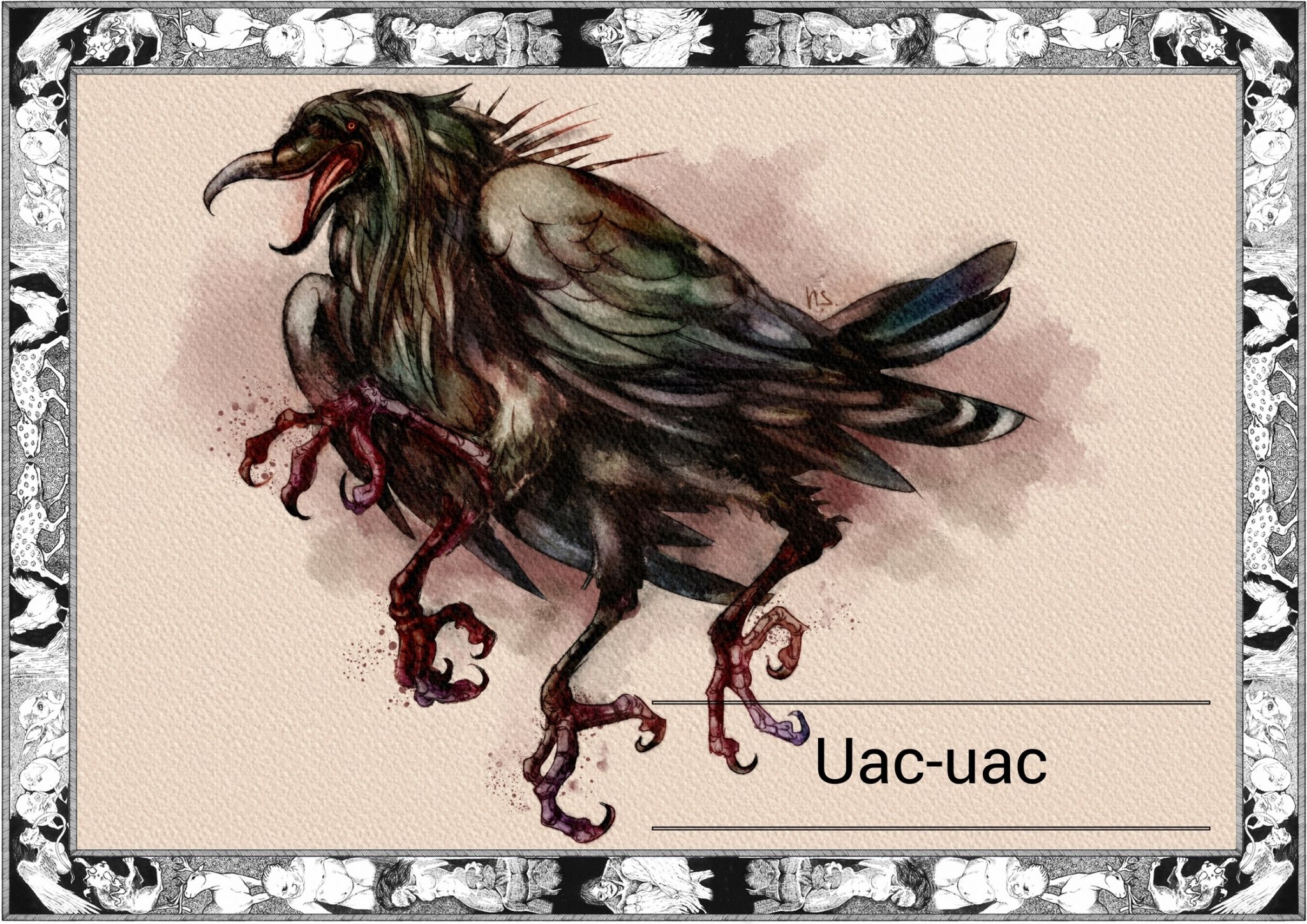
*Note this story is in Ibanag
Turi ta ili na Igbahay, ay maggian i tadday a neruma nga ayam. Ta ragun na Yafu tam, 1539, ay gavva tu sinallung na totolay na ili yuri balay na tadday nga marakay a tolay nga mangngagan tu Talagman. Turi ta lagum na balay na ay nadangnganad-da i aru nga kananassing anna napalla-palla a gannu-gannug. Talugaring danaw a gannug ay yuri ngisi nga gayang nga egga tu appa nga annariddu a takki-takki na, kuku-kuku na, anna sita-sitan na, tuange ta atuttukkaw na nga kagitta tu ila i kataram na.
Ikagi na totolay na ili, nga yuri nga ayam ay kavulun na tadday paga nga pinaratu nga mas mataganna anna mas marakay. Yuri nga rakay ni Talagman ay kuruga nepallo yatun ta iana-anabik na totolay na ili ay tu sigben kanu yayya. Gari nga aggaw, i sigben kanu, ay tolay nga mameppagafu ta gannu-gannug nga rakay anna taganna, maggafu turi ta pattuttukan na nga lugar.
Meammung taw, istoryan na kailian nga gari kanu ta tadday a aggaw, ay nagafu’ kanu na tadday a lalaki nga makapangwa si Talagman nga maddagun nga mattattaganna. Megafu taw, ginappo kanu nuri lalaki yuri talinga ni Talagman. Megafu turi, gari nga aggaw ay egga i negagangay onu tradisyon turi ta ili na Igbahay, nga danuri kailian turi ay maagal tu Ibajao, nga danuri kakaruan nga lallaki ay magappo yuri talinga ra. Yaw nga negagangay ay makwa tapenu meimmang yuri pakkasinabban nuri sigben turi ta ari-masingan nga maagal tu oag, nga yayya gapa tu mangiyawa ta denu nga mawak tapenu mabbalin nga sigben i tadday a tolay.
Kuruga nepallo i rakay ni Talagman, yatun ta adde ta sangaw a aggaw, istoryan na totolay nu kunnasi yayya makataganna nga usan na laman ay yuri aginingan na. Adde sangaw, edda pakolian i istorya na kaka-kakay ra ta ‘tuk, tu nasingad-da kanu gari nga lugguran ni Talagman i baggi na ta denu nga naggafu ta baddi a bote. Kunnud, kabalin na ay makkagak yayya, ngem, ibattang na i gadduwa na baggi na ta balay na.
Kagitta gabba laman gapa ni Talagman yuri kavulun na nga uac-uac nga naraka-rakay anna minattaganna. Yuri nga palla nga gayang, ay usan na yuri nataram nga attuttukkaw na tapenu duddugan na i totolay. Meammung taw, magaya yayya nga ikarammu danuri kuku-kuku na ta patta-pattak na totolay. Kurug a nafulotan i aya na nga mappaziga yatun ta mefulun yayya turi ta afu na nga sigben nga makkaga-gakak tapenu magalek ira ta totolay nga tagannad-da.
Yaw nga istorya ay magatu a ragun ngana i kadana na. Ngem, mepangngo nga ipakammu, nga nu masingam-mu yuri uac-uac anna danuri appa na nga takki-takki, ay aranni nga tumuttuttul laman sa maffugab yuri afu na.
English Version
In the town of Igbahay, there exists a curious creature. In the year of the Lord, 1539, the people of the town raided the house of an evil man called Talagman. In his house they found many horrors. One most strange was a black crow with a beak as sharp as a knife, four long feet and claws and spines.
Now, it was said by the townsfolk that this creature was the companion of something more malicious. The evil of Talagman was so great that the people of the town whispered that he was a sigbin. In those days, a sigbin was a man who caused great evil and harm from his hiding place.
The townsfolk even tell a story of one day when a strong man caught Talagman in the middle of an evil act and the strong man cut off Talagman’s ear. Now, in those days there was a tradition in the town of Igbahay, whose people are called the Ibajaos, where certain men would have their left ear cut off. This practice was to break the pact that sigben would have with the spirit called oag, the creature that gives the oil which would make a man become a sigben.
Such was the evil of Talagman that, to this day, people would tell stories of how his glance alone would cause harm. They still say of stories where their great-great-great grandparents would see Talagman take a small flask, anoint his body with oil and fly through the air leaving half of his body in his house.
The cruelty and malice of Talagman had his match in the uac-uac, his companion. The misshapen crow would stab victims with its sharp beak and take great pleasure in raking its claws against the flesh of humans. So great was its love of torture that it would fly with its sigben master to find fresh meat that it could dig its claws in.
This story is of hundreds of years past, but always be warned. If you see the uac-uac and its four legs, know that its master will not be far behind.
————————–————————–————————–
*The Ibanag language (also Ybanag or Ibanak) is spoken by up to 500,000 speakers, most particularly by the Ibanag people, in the Philippines, in the northeastern provinces of Isabela and Cagayan, especially in Tuguegarao, Solana, Abulug, Cabagan, and Ilagan and with overseas immigrants in countries located in the Middle East, United Kingdom and the United States. Most of the speakers can also speak Ilocano, the lingua franca of northern Luzon island. The name Ibanag comes from the prefix “I” which means “people of”, and “bannag”, meaning river. It is closely related to Gaddang, Itawis, Agta, Atta, Yogad, Isneg, and Malaweg.
Written by Karl Gaverza
Translation by Jake Calubāquib Coballes
Copyright © Karl Gaverza
Translation Copyright © Jake Calubāquib Coballes
Inspired by “The Legend of the Sigbin.” Pavon (1838-1839) in Philippine Folk Literature: The Legends. Eugenio. 2002.
Uac-uac Illustration by NightmareSyrup
Tumblr: http://nightmaresyrup.tumblr.com/
